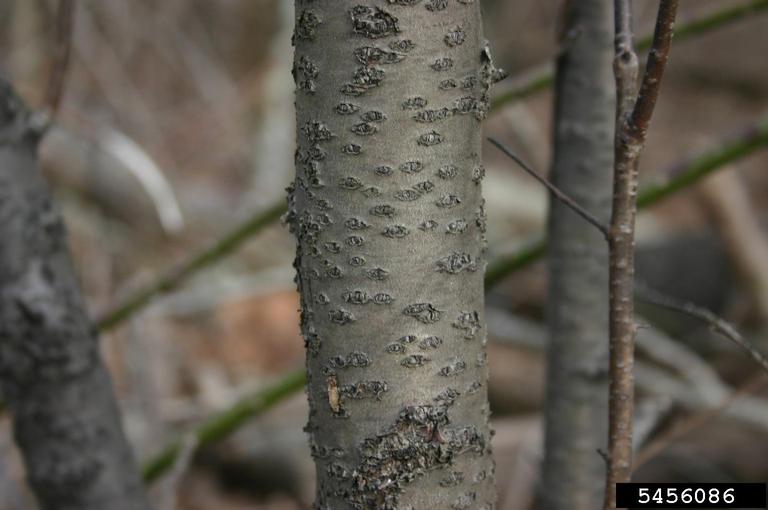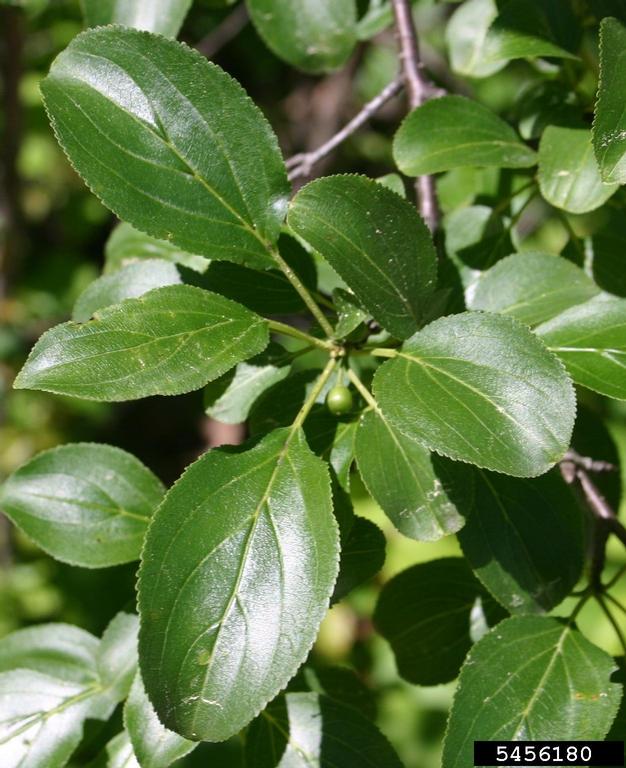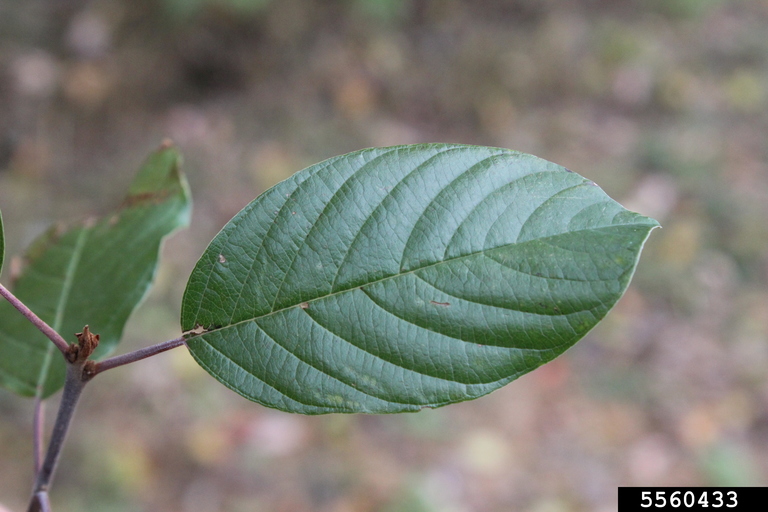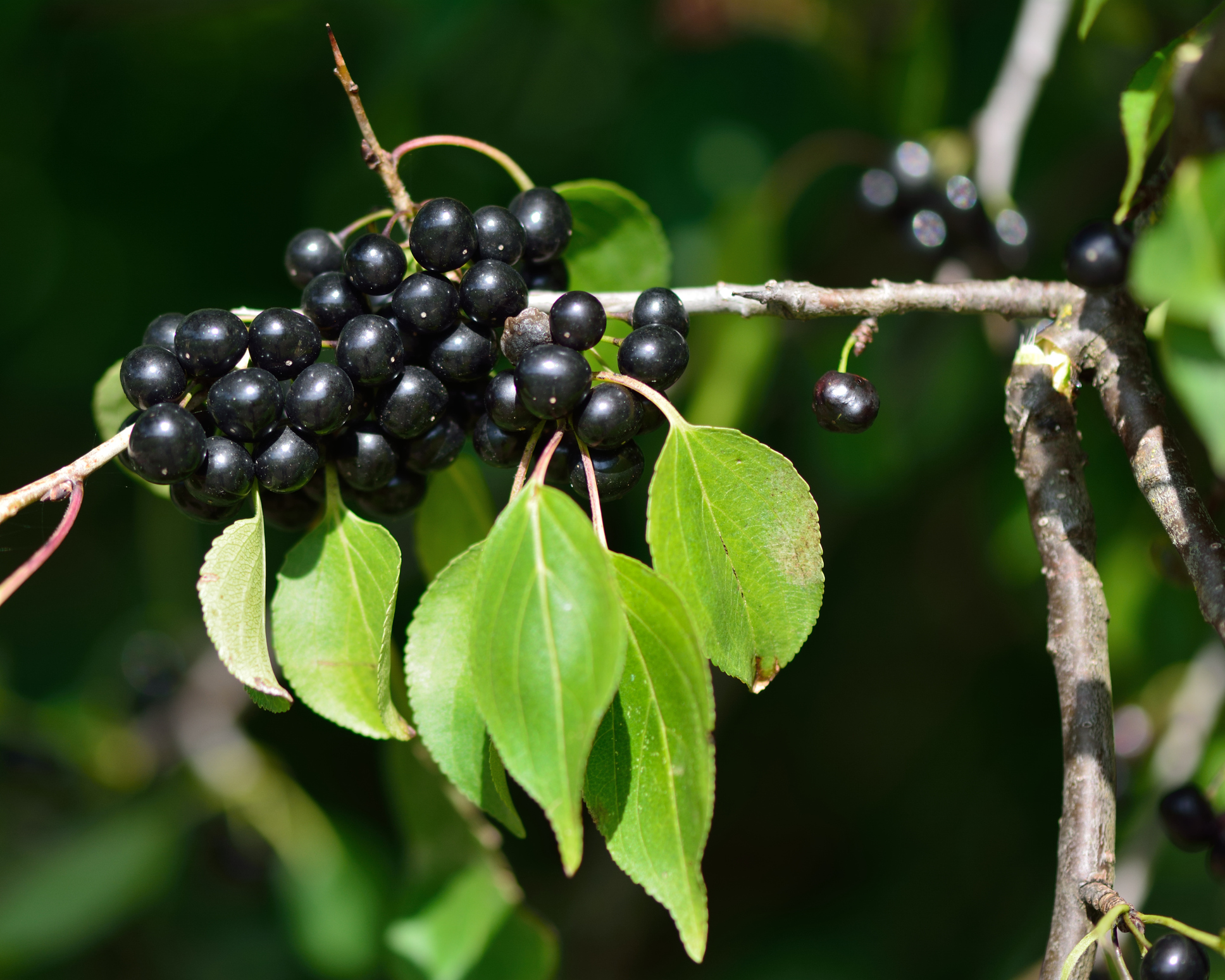| Environmental Columns
Common Buckthorn and Glossy Buckthorn
The Common Buckthorn and Glossy Buckthorn are exotic, invasive plants present in Pointe-Claire. These plants were introduced in North America in the 19th century. They can easily grow in any type of soil, dry or moist. You can spot them in woodlands or open fields, in full sun or in shaded areas. To control this plant successfully, it is important to be able to recognize its features.
At maturity, Common and Glossy Buckthorn may reach 8 metres in height and have a trunk 25 cm in diameter. There are small horizontal lines (lenticels) across their bark, which is smooth and shiny. The inner bark is orange in colour.

Common Burckthorn bark: Leslie J. Mehrhoff, University of Connecticut, Bugwood.org
Common Buckthorn has small thorns at the end of mature twigs. Its leaves are oval and have a curved tip. They are finely toothed and bear three to five curved veins.

Common Burckthorn leaf: Leslie J. Mehrhoff, University of Connecticut, Bugwood.org
Glossy Buckthorn does not have any thorns. Its leaves are oval, with smooth or slightly wavy edges. They vary in size. They have six to eight curved veins on either side of the central vein.

Glossy Buckthorn leaf: Chris Evans, University of Illinois, Bugwood.org
An invasive neighbour
This plant is a nuisance to surrounding biodiversity. Its leaves shade out native plant species, preventing them from growing and preventing forest regeneration. It also alters soil composition, which is detrimental to surrounding plants. The Buckthorn propagate easily, invading many areas until they become the only species. By eating their fruit and spreading their seeds, birds and small mammals help this propagation. Seeds can remain viable in the soil for up to five years. Repetitive control is necessary to eradicate the species.
Homeowners who find Buckthorn on their property can use these two methods to get rid of it:
- Young plants, with trunks less than 5 cm in diameter, are controlled by manually uprooting the shrubs and their roots (within a horizontal radius of 2 to 3 metres).
- For bushes with a trunk of 5 cm or more in diameter, the tree must first be cut 10 cm from the ground. Then, the stump must be covered with an opaque black film (plastic or geotextile).
Protective clothing (gloves, long sleeves and pants) should be worn when managing Common Buckthorn as it has thorns. Before placing the plant in the composting bin, make sure to remove all the fruit and place them in a black plastic bag to dry them out.

Common Buckthorn berries
- Revegetation is crucial after control work. Plants that are suitable for the site must be chosen for revegetation purposes. Densities of 1 tree per 25m2 and 1 shrub per 3m2 are recommended to create fairly strong competition against the Buckthorn. Spreading BRF chips around newly planted plants is also recommended to control the regeneration of Buckthorns in the area.
References:
